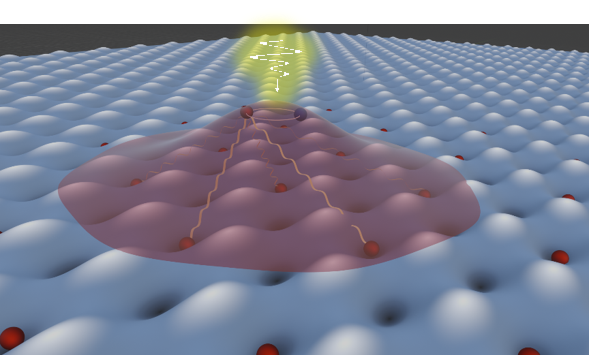
Researchers have discovered that light – in the form of a laser – can trigger a form of magnetism in a normally nonmagnetic material. This magnetism centers on the behavior of electrons...
Read More

Researchers have discovered that light – in the form of a laser – can trigger a form of magnetism in a normally nonmagnetic material. This magnetism centers on the behavior of electrons...
Read More
Electron microscope image of a chromium dioxide devices based on wires. The green wire is the chromium dioxide ferromagnet. The orange wires are superconductors and are necessary to produce a superconducting current through the green wire.
Electrons that spin synchronously around their axis, turn out to stay superconductive across large distances within magnetic chrome dioxide. Electric current from these electrons can flip small magnets, and its superconductive version could form the basis for a hard drive without energy loss...
Read More
These images show the central plane of a rotating disk orbiting a newly formed protostar (dark dot) formed in a three-dimensional model of the shock-triggered collapse of a molecular cloud of gas and dust. Density is shown on the left, while the x velocity plot on the right shows how the shock (outer edge) has injected fingers with motions that are responsible for producing the spin of the disk around the central protostar. Image is provided courtesy of Alan Boss.
New details about the trigger that may have started the earliest phases of planet formation in our solar system. For decades, it’s been hypothesized that our Solar System’s genesis was initiated by a shock wave from a supernova...
Read More
Recent Comments